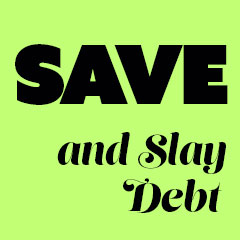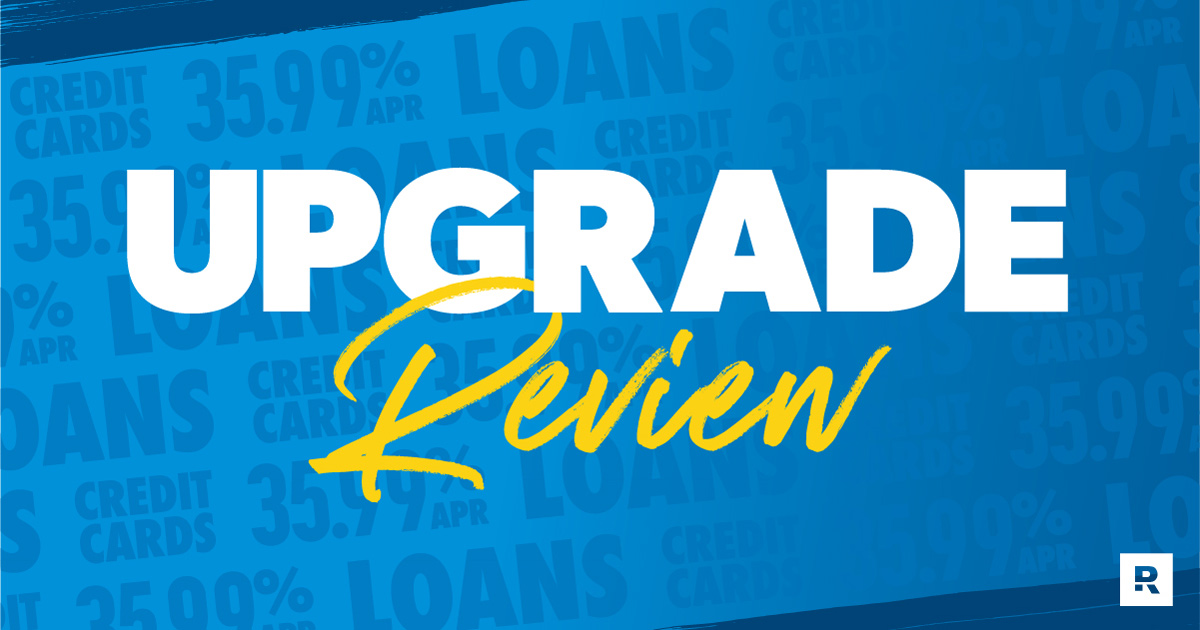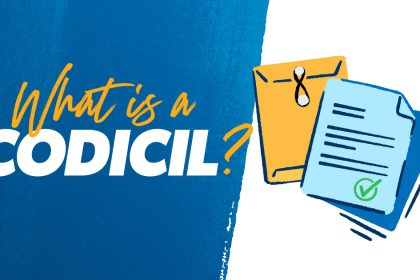Short on cash? Need a loan to renovate your kitchen? Upgrade says they can help (for a fee, of course).
Upgrade personal loans and credit cards may seem like an easy, risk-free way to borrow money. But don’t be fooled by the name—doing business with Upgrade won’t actually upgrade your finances.
Let’s get into who Upgrade is and how they work so you can avoid getting caught in a cycle of debt.
Our Quick Take on Upgrade
While Upgrade claims to make personal loans and lines of credit more accessible and affordable—with fixed interest rates and predictable monthly payments—customers still end up paying a ton of money in interest.
Plus, Upgrade’s lower borrowing standards make it easier for those with poor credit history to fall even further into debt. Our advice: If you want to actually make progress with your money, say no to Upgrade.
What Is Upgrade?
Upgrade is an American neobank founded in 2016 that sells personal loans and credit cards.
Upgrade offers:
- Personal loans up to $50,000
- Four different Upgrade Cards (personal lines of credit)
- Premier Savings (high-yield savings account)
- Rewards Checking Plus (checking account with debit card and ATM access)
- Credit health monitoring
- A mobile app to access your Upgrade account
Upgrade wants you to know they’re not like a regular bank—they’re a cool bank. They say they offer a better experience than traditional banking. But what exactly does that mean?
Online lenders, like Upgrade and the Dave app, pride themselves on their supposedly affordable and responsible credit options.
They let you see exactly what you’ll pay each month before you take out a loan so you can better estimate your monthly payment and avoid hidden fees. And since they only offer personal loans with fixed interest rates, you don’t have to worry about any surprise interest rate changes.
But that’s assuming you consistently make your monthly payment. Let’s dig a little deeper into how Upgrade’s products work—so you can have a better idea of what’s really going on.
Upgrade Loan Review
Upgrade allows you to take out personal loans to:
- Refinance credit card debt
- Consolidate debt
- Renovate your home
- Make a big purchase
- Cover an emergency expense
Loan amount: $1,000–50,000
APR (annual percentage rate): 9.99–35.99%
Loan term: 24–84 months
Fees: origination fee of 1.85–9.99%, late fee of $10, and failed payment fee of $101
Qualifying for an Upgrade Personal Loan
In order to apply for a loan, you must:
- Be a U.S. citizen or permanent resident or be living in the U.S. on a valid visa
- Be at least 18 years old (in most states)
- Have a bank account
- Have a valid email address
Upgrade doesn’t say what credit score you need to get approved for a personal loan. However, they do state that if your credit score is below 600, it can be harder to get a loan—especially one with a low interest rate.
But just because you can check all these boxes, it doesn’t necessarily mean you’ll be approved for an Upgrade loan.
Upgrade Loan Application Process
How much of a loan you’re approved for and your interest rate depend on your credit score and history. But here’s the general process to apply for an Upgrade personal loan:
- See what loan amount and interest rate you prequalify for. Upgrade will do a soft inquiry that won’t affect your credit.
- Choose a loan from a list of multiple loan options.
- Verify your identity and income. Upgrade will also do a hard inquiry into your credit, which can affect your credit score.
- Get approved and receive funds. How soon you can access funds varies.
- Repay the loan. Missed payments will be reported to the major credit bureaus and can hurt your credit.
Heads up! Upgrade will let you know your estimated monthly payment when choosing a personal loan. But what you may not see is exactly how much that loan will cost you overall.
For example: You could get approved for a $15,000 loan with a 12.66% APR over 36 months. In that case, your monthly payment would be around $500. But after those three years, you’ll have actually paid over $18,000 total, with more than $3,000 of that going to cover interest! And don’t forget the origination fee—that could cost you anywhere from $277 to $1,500 up front.
Plus, depending on the loan and your credit score, your interest rate could be as high as almost 36%. That’s about as bad as a payday loan!
Upgrade Loan Features
Now let’s talk about some of Upgrade’s main selling points for their personal loans—and what they really mean for your wallet.
Discounts: You can lower your interest rate if you sign up to have payments automatically come out of your account each month. Upgrade also gives discounts to customers who use their other products (convenient . . . for them).
Fast Funding: Many people like that Upgrade offers fast funding for their personal loans—sometimes as soon as one day. After all, who doesn’t want to get their money immediately? But the sooner you get your money, the sooner they can start charging you interest. Gee, thanks?
Fixed Interest Rate: And yes, having a fixed APR is better than having a variable interest rate that can shoot up when you least expect it. But those fixed payments aren’t there to help you. They’re in place to make sure you don’t pay off your debt early—and Upgrade gets their very generous cut of interest.
Secured Loans: You might get a lower interest rate if you take out a secured loan with Upgrade. But secured loans require you to put up something valuable (like your car) as collateral. That means if you don’t make your payments and default on the loan, you could lose your car!
Joint Loans: Upgrade allows you to have someone else cosign a loan with you. While this may get you a bigger loan or a lower interest rate, it’s also a huge risk. If you or the other person can’t hold up their end of the loan, you both take the hit—to your credit and your relationship. Trust us, things get real awkward real fast when you cosign a loan with someone else. So don’t do it.
Bottom line: It’s important you know the whole picture before you jump at the chance to take out a loan.
Upgrade Credit Cards Review
Upgrade offers four different cards with credit lines from $500 to $25,000:
- Life Rewards
- Cash Rewards
- Upgrade Select
- Upgrade OneCard
But it’s important to know that an Upgrade Card isn’t a traditional credit card—it’s a personal line of credit. They might sound the same, but they work very differently.
A personal line of credit is similar to a personal loan in that you get approved to borrow a certain amount of money. But instead of getting a lump sum all at once, you borrow from the full amount as needed and repay what you’ve borrowed in monthly payments.
That means you still have to pay interest on a personal line of credit (even if you make all your payments on time). By calling it a card, Upgrade can make you think you have more flexibility than you really do, while they collect the interest.
Upgrade Card Interest
Upgrade says their cards help you save on interest more than a regular credit card. But does that actually hold up?
The average credit card interest rate is 23.37%.2 But Upgrade Cards can have an APR as high as 29.99%.3 So you could end up being charged more interest than you’re expecting. Remember, credit companies always use the best-case scenarios to get you to believe it’ll be super easy to make those monthly payments.
And according to the fine print, “If there are changes to your credit score or other risk factors, or changes to market conditions, the availability of your remaining credit, the interest rate, and length of the credit offered may be adjusted for future transactions.”4
Translation: The amount of credit you have access to, how long you have access to it, and your interest rate could all change. Uh, so much for your predictable interest rate.
Upgrade Credit Card Features
Cash Back and Rewards: Some Upgrade Cards give you cash back and rewards (like discounts) when you shop. But any cash you’re getting back is a small percentage of what Upgrade is charging you for using their lines of credit. By calling them rewards, they make you think they’re actually doing you a favor—which makes you spend more money. And when you do the math, you’ll see that credit card rewards aren’t actually worth it.
Welcome Bonus: You have to open a Rewards Checking Plus account with Upgrade and make three qualifying debit card transactions before you can qualify for a welcome bonus. So you have to spend money to get money? Hmm, interesting.
Fees: Three out of the four Upgrade Cards don’t have an annual fee (the Upgrade Select card has a $39 annual fee).5 But you’re still responsible for late fees and insufficient fund fees.
Bottom Line: An Upgrade card may seem like a better alternative to a traditional credit card, but it will put you in debt just as easily as a credit card. The only difference is that you’re less likely to see it coming.
Our Upgrade Review: Don’t Fall for the Credit Trap
Upgrade says they help you “make smart financial decisions to help you reach your goals.” But let’s be clear: The only thing they’re helping you do is go into debt.
While Upgrade has lower borrowing requirements compared to other lenders, that doesn’t mean they have people’s best interests at heart. In fact, they allow those who have a bad track record with credit to borrow even more money.
By promoting lower interest rates and seemingly free perks, Upgrade is able to lure more people into taking out loans or signing up for their credit cards. But they don’t give you the full picture of how much their loans really cost you. And by the time you realize it, you’ll have already paid them thousands of dollars in interest.
The truth is, Upgrade won’t help you take control of your money. They’ll only keep you trapped in a vicious cycle of debt.
Upgrade Your Finances the Right Way With a Budget
Personal loans and credit cards will always let you down. It’s a rigged system and you’re the one who pays. Every. Single. Time.
But what if you could save more of your money instead of handing it over to someone else? It’s time to get off the credit hamster wheel and make real progress with your money. And it all starts with a budget.
A budget is simply a plan for your money. It’s deciding how you’re going to spend your paycheck before you get it. Because when you know exactly how much you have to cover the essentials, you don’t have to worry about how you’re going to make it to your next payday.
A budget helps you get ahead and stay ahead.
You can get started right now (for free!) with the EveryDollar budgeting app. EveryDollar makes it easy to plan your spending every single month. Plus, it helps you save more and pay off debt faster!
Don’t let big credit companies like Upgrade take advantage of you. You can break the cycle of debt and take control of your money.
Read the full article here






